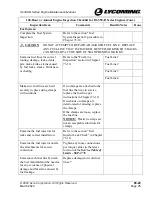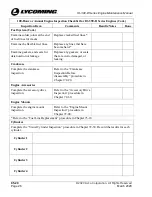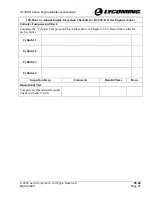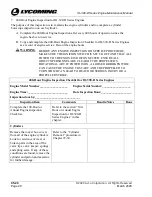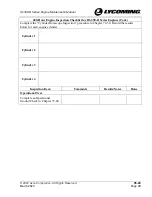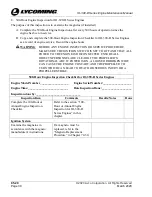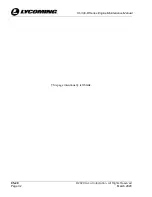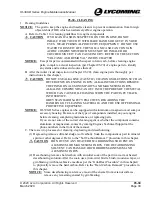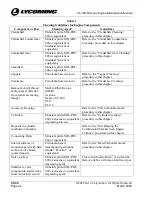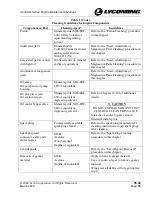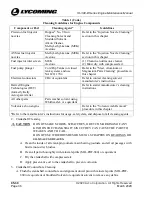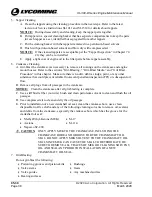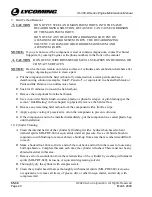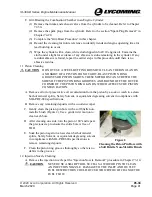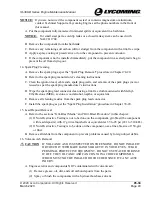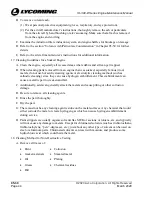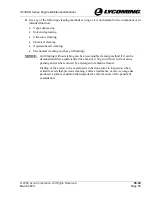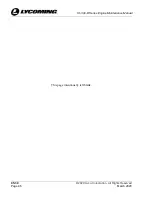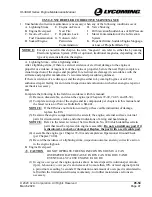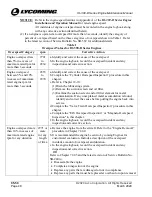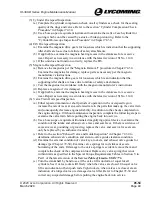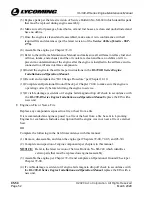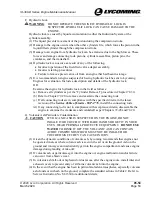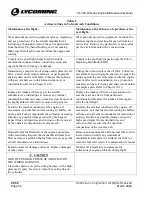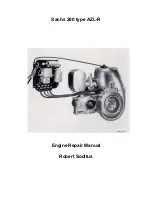
IO-390-D Series Engine Maintenance Manual
© 2020 Avco Corporation. All Rights Reserved
05-30
March 2020
Page 39
IO-390-D Series Engine Maintenance Manual
A.
Grit-Blast Media
CAUTION
DO NOT USE SAND OR METALLICALLY ABRASIVE MATERIALS
TO GRIT-BLAST.
During grit-blasting, for general cleaning of components not subject to Non-Destructive
Testing (NDT), only use mildly abrasive blast media such as 17-grit walnut shells or
equivalent.
For components subject to NDT, do not use 17-grit walnut shells, use a fine abrasive of 150-
grit or finer. Refer to the “Cleaning Methods for Non-Destructive Testing” section in this
chapter.
B.
Grit-Blast Procedure
CAUTION
ALWAYS REMOVE ANY COMPONENT OR PART FROM THE ENGINE
BEFORE GRIT-BLASTING THE COMPONENT OR PART.
MASK OR PROTECT ALL MACHINED SURFACES, BEARING
SURFACES, BUSHINGS, AND GEARS ON COMPONENTS OR ENGINE
PARTS DURING GRIT-BLASTING.
(1)
To grit-blast the engine cylinders, refer to the section "Grit-Blasting the Combustion
Chamber in an Engine Cylinder" in this chapter.
(2)
Hold the grit-blast gun (filled with the correct grit-blast media), a few inches away, but
pointed toward the surface to be grit-blasted. Operate the grit-blast gun as per the
manufacturer’s instructions.
(3)
Unless otherwise specified in the manufacturer’s instructions, use approximately 35 to 45
psi (241 to 310 kPa) of air pressure during grit-blasting.
(4)
Use compressed air and the vacuum cleaner to remove any debris and residue.
(5)
After all cleaning is complete:
(a)
Rinse the part in a petroleum solvent.
(b)
Dry the part with an air blast to remove all loose particles.
(c)
Apply a coating of preservative oil to the entire part.
(d)
Put cleaned oil and fuel system components in a clean sealed container until ready for
assembly.
(e)
Install clean plastic caps or covers over each open end of a cleaned hollow tube, hose
or line to prevent debris from entering these areas.
(f)
Put remaining cleaned parts on clean bench surfaces where there is no particulate,
dirt, grit, or other unwanted materials.
8.
Soft Carbon Removal
A.
Unless otherwise directed, put the component in a bath tank fully immersed in mineral spirits
or equivalent for 10 minutes.
B.
Remove the component from the bath tank.
C.
Remove any remaining soft carbon (dirt or sludge) from the component with a lint-free wipe.
D.
Apply a spray coating of preservative oil on the component to prevent corrosion.
E.
If the component is not to be installed immediately, put the component in a sealed plastic bag
until installation.

